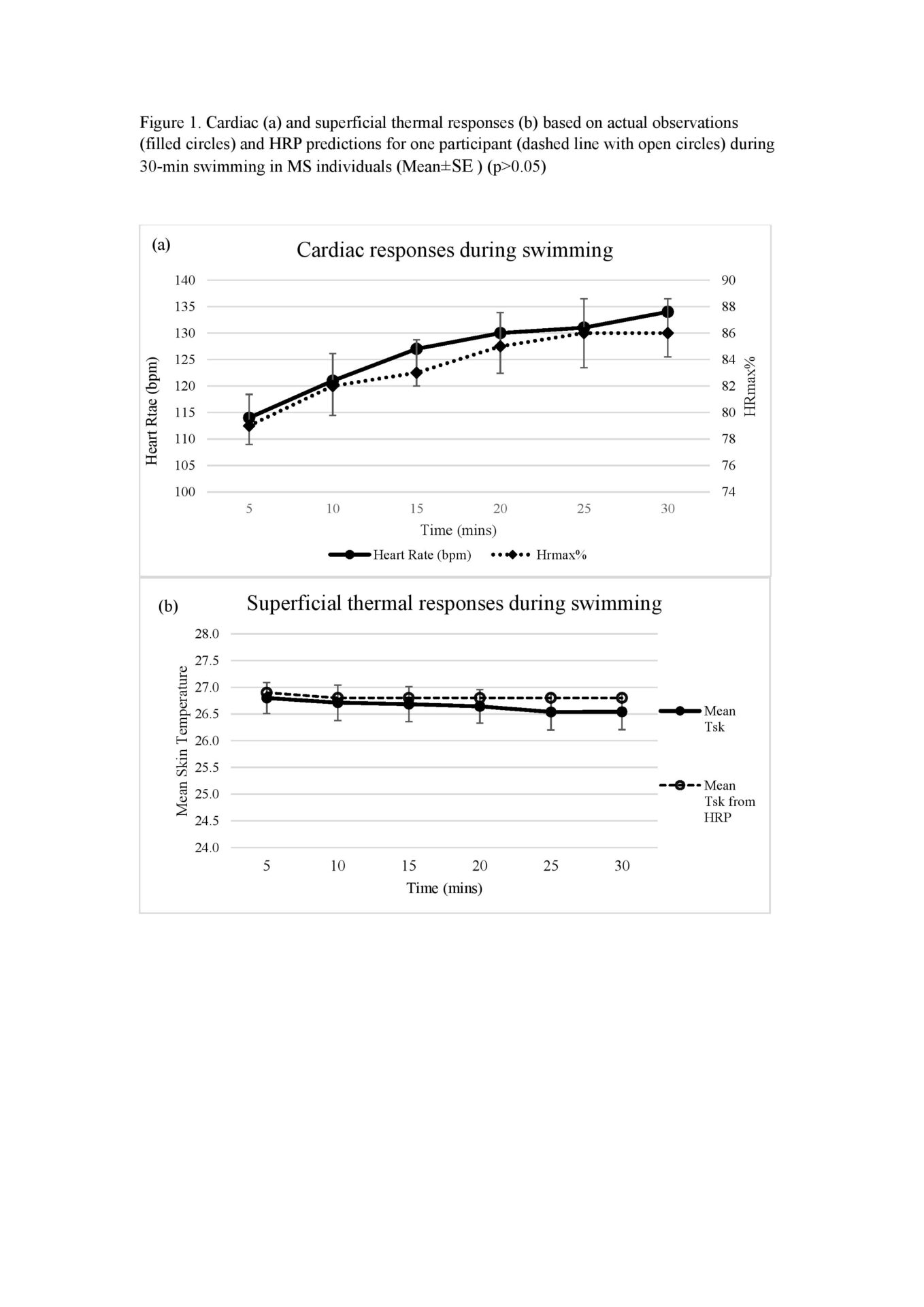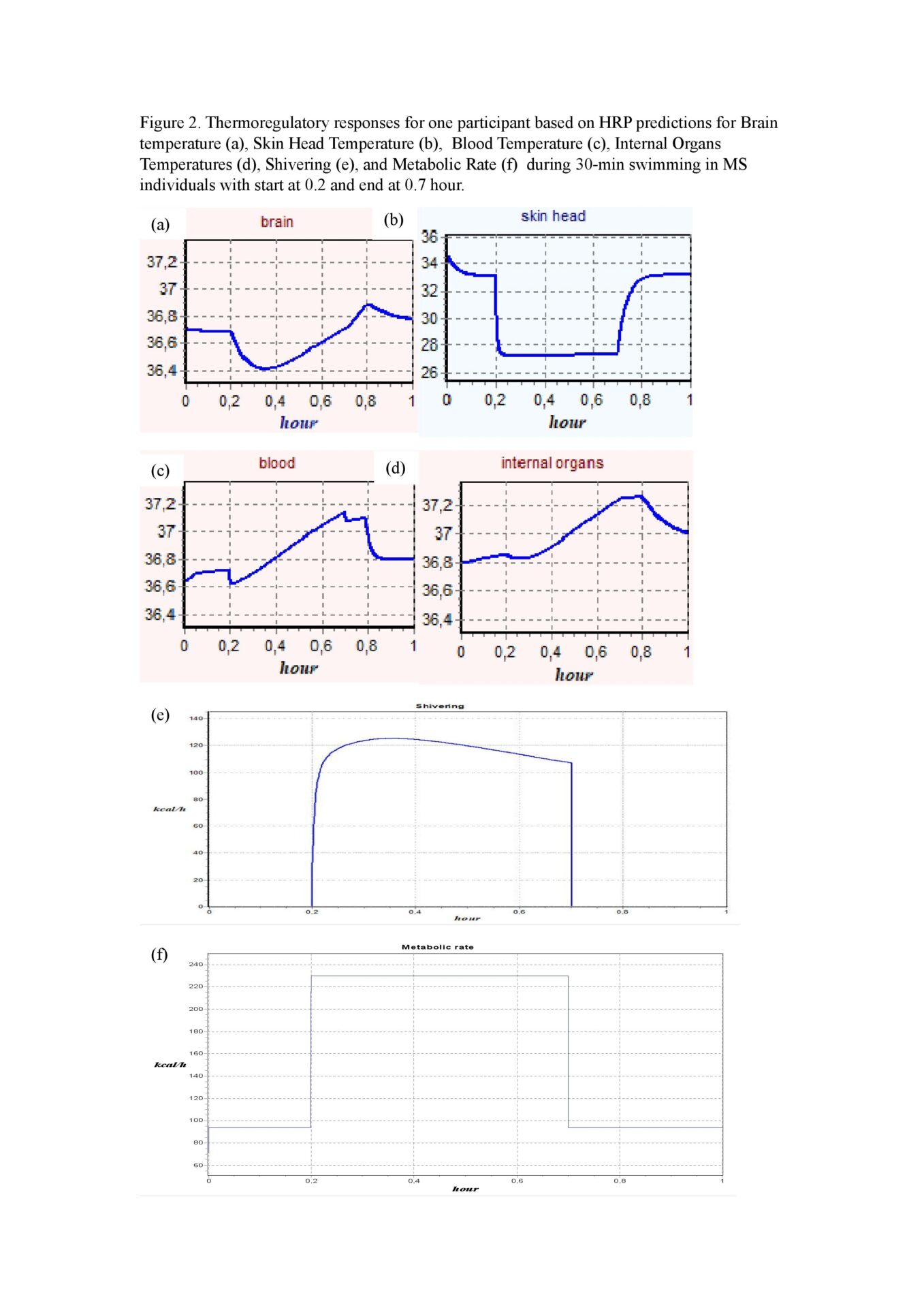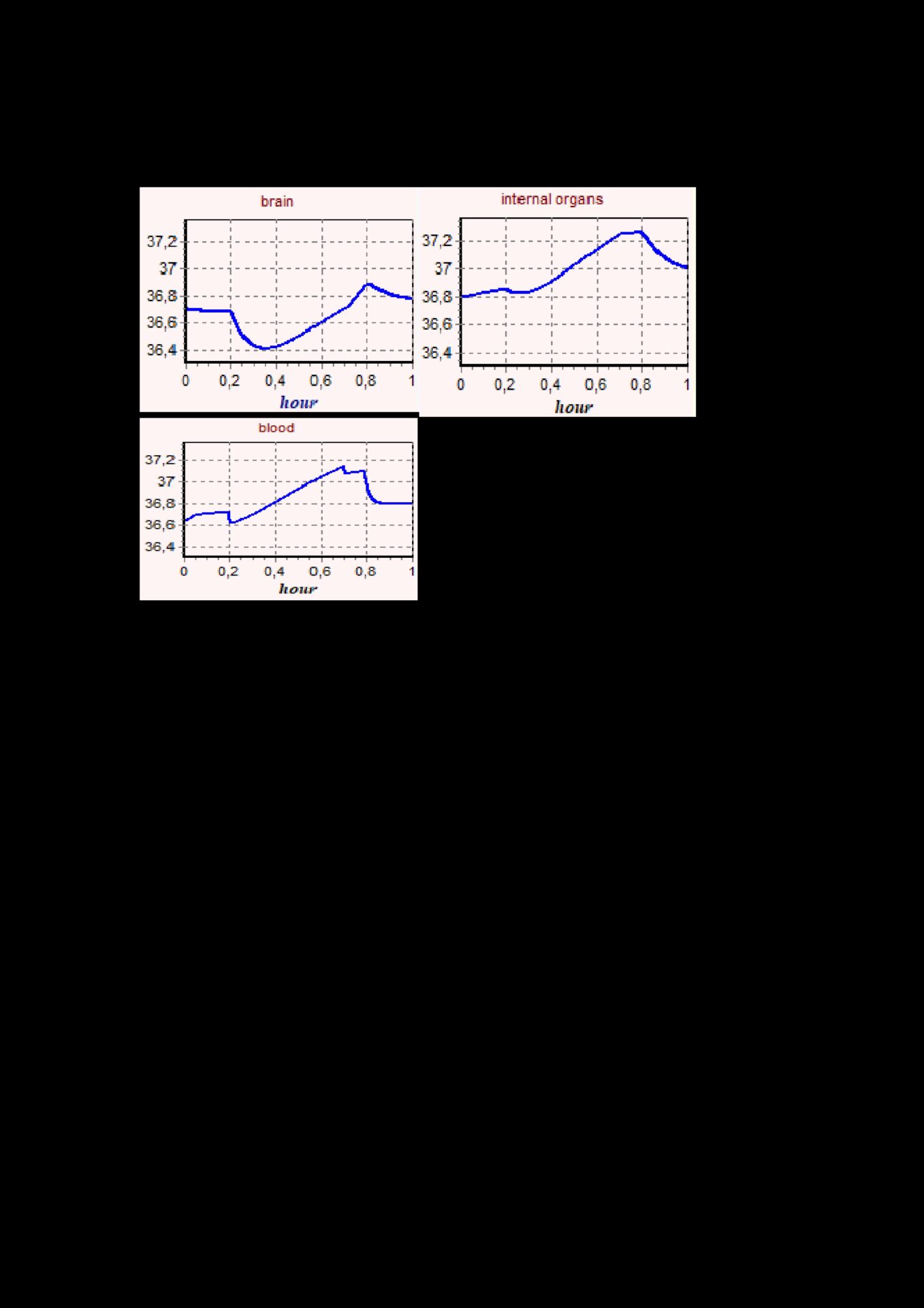Background: When individuals with multiple sclerosis (MS) engage in moderate-intensity exercise, thermoregulatory dysregulation can occur, leading to negative clinical outcomes and early cessation [1]. Exercising in cool water temperatures can reduce the onset of overheating and allow for obtaining the health benefits of high intensity continuous lactate threshold training, that may include enhanced myelination and neuroprotective and metabolic benefits for individuals with MS [2,3]. While critical swimming speed (CSS) is an index for endurance performance and corresponds to lactate threshold in healthy swimmers [3], its relevance to the MS population remains unclear.
Objective: To examine thermoregulatory responses during a 30-min swimming session (T30) in cool water at maximum (100%) CSS in MS patients. Actual observations and modelled predictions were evaluated.
Methods: Six adults (55.8 ± 8.0 years, 2 females) with low-to-mild disability MS performed a 30-min steady-state swimming trial in cool water of 26 °C (ambient temperature: 24 °C, 55 % relative humidity). Exercise intensity was set to 100% of CSS, which was calculated from timed maximum effort, over distances of 50m, 100m, and 200m freestyle. Skin temperatures (Tsk), absolute heart rate (HR), and percentage of maximal heart rate (%HRmax) were continuously recorded. Tympanic temperature (Tty), blood lactate (BLa), thermal sensation (TS), and comfort (TC), and rating of perceived exertion (RPE) were measured pre- and post- swimming. A one-way ANOVA for repeated measures was conducted for multiple comparisons with post hoc analysis, a paired t-test and effect size (ES) for pre- and post- measurements at p<0.05. The validated Health Risk Prediction Model (HRP) was utilized to describe heat balance and brain temperature.
Results: Four out of six volunteers successfully completed the entire swimming trial (T30), while one subject terminated prematurely after ~20 min and the other after 5 min. Swimming intensity of 98.2 ±2.6% CSS (0.46±0.22m/s-1) significantly increased BLa from resting values of 2.73 ± 0.5 to 4.98 ± 1.48 mmol/l and RPE from “very light” to “somewhat hard” (p<0.05) (Table 1). Cardiac work remained stable during T30 for HR and HRmax%, 125±17 bpm and 84±2%, respectively (p>0.05) (Fig. 1). Thermoregulatory changes were observed, such as reduced Tty after swimming (∼1 °C, p<0.05), while Tsk remained unchanged at ~27°C (p>0.05). Improvements to TS from “cool” to “neutral” and TC from “slightly uncomfortable” to “comfortable” were observed at the end of the trial. HRP showed a sharp reduction in brain temperature, a stable mean Tsk ~27°C, and an extent increase of blood and body core temperatures (Fig. 2).
Conclusion: Prolonged high intensity swimming in cool water temperatures at lactate threshold resulted in mild reduction of tympanic temperature that accompanied cardiometabolic and thermoregulatory patterns similar to healthy swimmers [4,5]. Additionally, CSS appears to be a valid and practical coaching tool for endurance testing and prescription of therapeutic swimming for individuals with MS.




